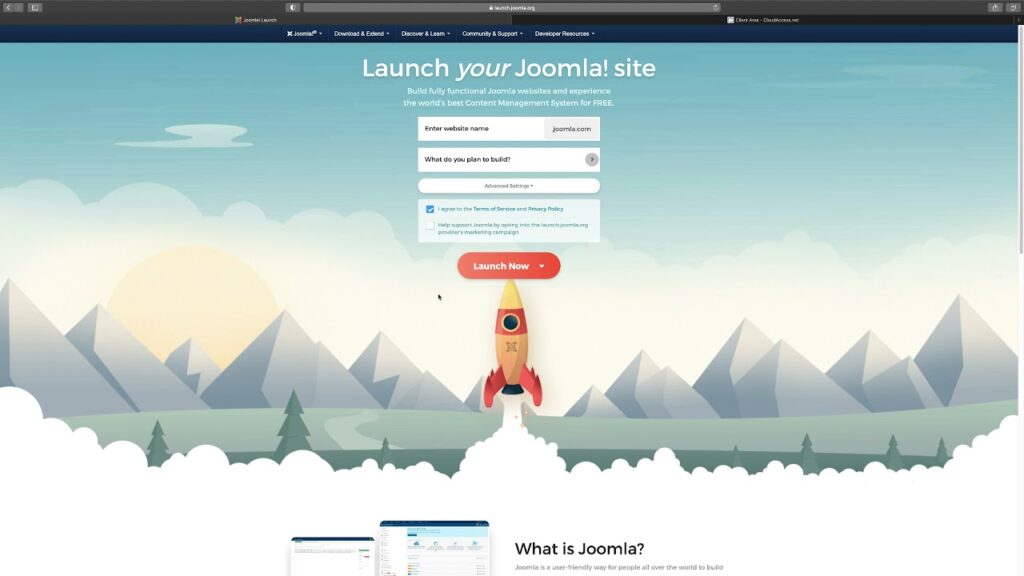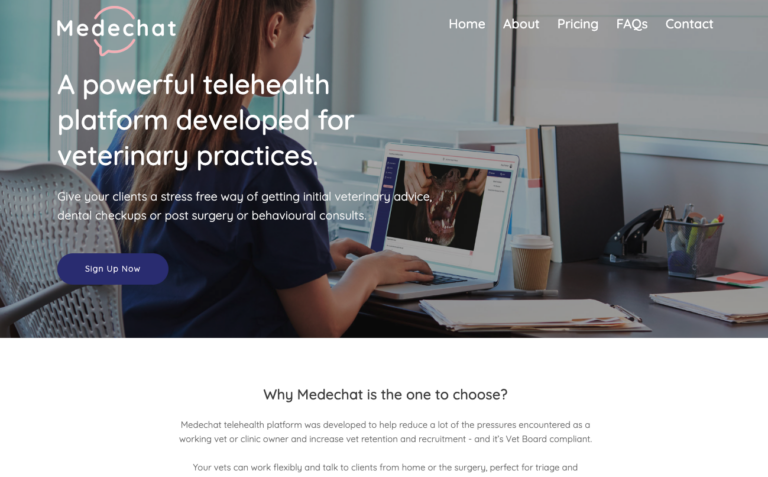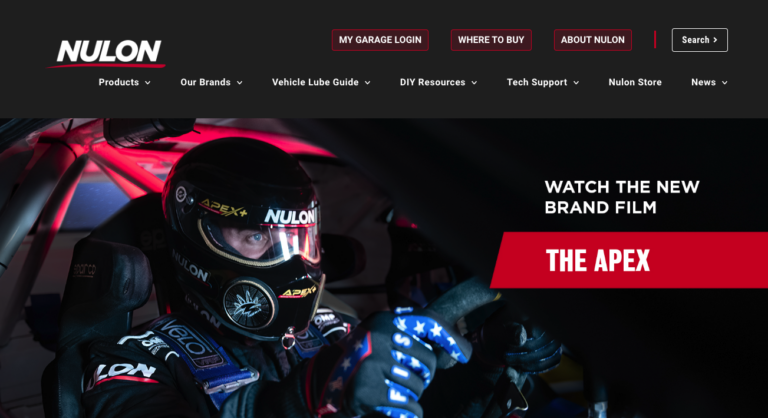Home Our Diverse Range of Tech Stack Joomla Website Development Services in Australia
Craft your dream website: Custom Joomla development services
Joomla is a popular free and open-source content management system (CMS) used to create, manage, and publish digital content. In this article we’ll be taking you through why Joomla could be the best CMS for your website.
What is a Joomla
Joomla CMS is a free and open-source software that allows users to create, manage, and publish digital content, such as websites and blogs. It is a web-based CMS that is designed to be user-friendly, flexible, and highly customizable, with a modular architecture that allows for advanced customization and development. Joomla CMS is one of the most popular CMSs in the world, used by millions of users and businesses worldwide. It offers a range of features, including user management, content creation and editing, search engine optimization, and more.
Joomla is built using PHP as the server-side scripting language, and it uses MySQL or MariaDB as the database management system. It also incorporates other web technologies such as HTML, CSS, and JavaScript to create dynamic and interactive web pages. Joomla uses the Model-View-Controller (MVC) architectural pattern, which separates the application logic into three interconnected components, making it easier to develop, maintain, and scale complex web applications. Additionally, Joomla is compatible with a range of web servers, such as Apache, NGINX, and Microsoft IIS.
Joomla as a CMS
Joomla works as a CMS by providing a user-friendly interface that allows website owners to manage their website’s content, design, and functionality. The basic workflow of Joomla includes:
- Installation: After downloading the Joomla software, users can install it on their web server using a standard installation process.
- Configuration: Once Joomla is installed, users can configure the basic settings of their website, such as the site name, description, and logo.
- Content creation: Users can create content in Joomla using the built-in editor, which supports formatting and media insertion. They can also organise content into categories and tags for easier navigation.
- Customisation: Joomla offers a wide range of customisation options through templates and extensions. Users can choose from thousands of free and premium templates to customise the look and feel of their website, and add additional functionality through extensions.
- Administration: Joomla has a powerful administration panel that allows users to manage their website’s settings, user accounts, and security features.
Overall, Joomla provides a robust CMS solution that is suitable for a wide range of websites, from personal blogs to large corporate websites. Its flexibility and extensive customisation options make it a popular choice for users who want more control over their website’s design and functionality.
How widely used is Joomla on the internet
Joomla is a popular content management system (CMS) that has been used to build millions of websites worldwide. According to the latest statistics, Joomla is the third most widely used CMS on the internet, with a market share of around 3.1%.
While it’s not as popular as WordPress, which has a market share of over 60%, Joomla still has a significant user base and is widely used by businesses, organisations, and individuals to create and manage their websites.
One of the reasons for Joomla’s popularity is its flexibility and versatility. Joomla can be used to build a wide range of websites, including personal blogs, e-commerce sites, corporate websites, and even social networking sites. Its large and active community of developers also contributes to the platform, developing new extensions and templates that can be used to customise and enhance Joomla websites.
Overall, Joomla remains a popular choice for users who are looking for a flexible and powerful CMS that can be tailored to meet their specific needs.
How often is Joomla upgraded
Joomla releases new versions and upgrades periodically to improve functionality, security, and performance. The frequency of these upgrades depends on the version and the release cycle, which typically involves a major release every 18 months and minor releases every 6 months.
For example, Joomla 4 was released in August 2021 after several years of development, and it introduced a range of new features and improvements. Since then, there have been several minor updates released, including Joomla 4.0.2, 4.0.3, and 4.0.4, which addressed bug fixes, security updates, and performance improvements.
Joomla also provides Long Term Support (LTS) releases, which are supported for a longer period of time and receive security updates and bug fixes. The current LTS version is Joomla 3.10, which was released in August 2021 and will be supported until August 2023.
It’s important to keep your Joomla installation up-to-date with the latest version and security patches to ensure optimal performance and security.
Designing a website in Joomla
Joomla provides the flexibility to either use pre-designed templates or create your own custom design. Templates are pre-designed layouts that determine the look and feel of your website. There are numerous Joomla templates available online, both free and paid. You can choose the one that suits your requirements, customise it as per your needs, and install it on your Joomla website.
However, if you are familiar with web development, you can also create your own custom Joomla templates. To create a custom template, you need to have knowledge of HTML, CSS, and PHP. Joomla’s template system allows you to create your own templates from scratch or modify the existing templates to match your requirements.
Creating your own template from scratch requires more time and expertise than using a pre-designed template. However, it gives you complete control over the design of your website. Moreover, custom templates are unique and personalised, and you don’t need to worry about copyright infringement issues. Joomla’s template system allows you to create templates that are responsive, optimised for search engines, and meet web standards, making your website more user-friendly and accessible.

Should I use Joomla or WordPress?
Deciding between Joomla and WordPress ultimately depends on your specific needs and preferences. Both are popular content management systems (CMS) that offer a wide range of features and customization options, but they have some key differences.
Here are some general factors to consider when choosing between WordPress or Joomla:
- Ease of use: WordPress is generally considered to be easier to use than Joomla, with a more intuitive interface and simpler administration panel. Joomla can be more complex and requires more technical knowledge.
- Flexibility: Joomla is more flexible than WordPress, with a modular architecture that allows for more advanced customisation and development. WordPress, on the other hand, is designed to be more accessible to users without advanced technical knowledge.
- Community support: Both Joomla and WordPress have large and active communities of users and developers, but WordPress’s community is generally considered to be larger and more diverse.
- Extensions and plugins: Both Joomla and WordPress offer a wide range of extensions and plugins that can be used to enhance functionality, but WordPress has a larger and more diverse library of plugins.
- Security: Both Joomla and WordPress take security seriously and have built-in security features, but WordPress has historically been targeted more frequently by hackers due to its popularity.
If you’re looking for a CMS that is easy to use and has a wide range of plugins and templates available, WordPress may be a good choice. If you have more advanced technical knowledge and are looking for a CMS that offers greater flexibility and customisation options, Joomla may be a better fit.
Is Joomla the right CMS for me?
Choosing the right CMS for your website is an important decision, and Joomla is a powerful option to consider. With its flexible and modular architecture, Joomla allows for advanced customisation and development, making it a great choice for users with more technical knowledge. Additionally, Joomla has a large and active community of users and developers who provide support and contribute to its ongoing development. If you’re looking for a CMS that offers advanced customisation options and robust community support, Joomla may be the right choice for your website.
Butterfly has over 15 years experience working with Joomla for website design. Talk to one of our digital specialists to find out how we can help you with your next or existing Joomla project.
Frequently Asked Questions on Joomla
What are the benefits of using Joomla?
Joomla offers a range of benefits, including a flexible and modular architecture that allows for advanced customisation and development, a large and active community of users and developers, and a user-friendly interface.
How does Joomla work as a CMS?
Joomla works by allowing users to create and organise digital content using a series of menus and modules. It includes features such as user management, content creation and editing, search engine optimization, and more.
How widely used is Joomla on the internet?
Joomla is a popular CMS, with an estimated 3% market share of all websites on the internet.
How often is Joomla upgraded?
Joomla releases upgrades and security patches on a regular basis. Major version upgrades typically occur every 18 months to 2 years.
Should I use Joomla or WordPress?
Choosing between Joomla and WordPress ultimately depends on your specific needs and preferences. Both are popular CMSs with their own advantages and disadvantages. Consider factors such as ease of use, flexibility, community support, and security when making your decision.
Can I customise my Joomla website?
Yes, Joomla is highly customisable and allows for advanced customisation and development using its modular architecture.
Is Joomla secure?
Joomla takes security seriously and includes built-in security features, such as two-factor authentication and password encryption. However, like any CMS, it’s important to keep your site up-to-date with the latest security patches to prevent vulnerabilities.



